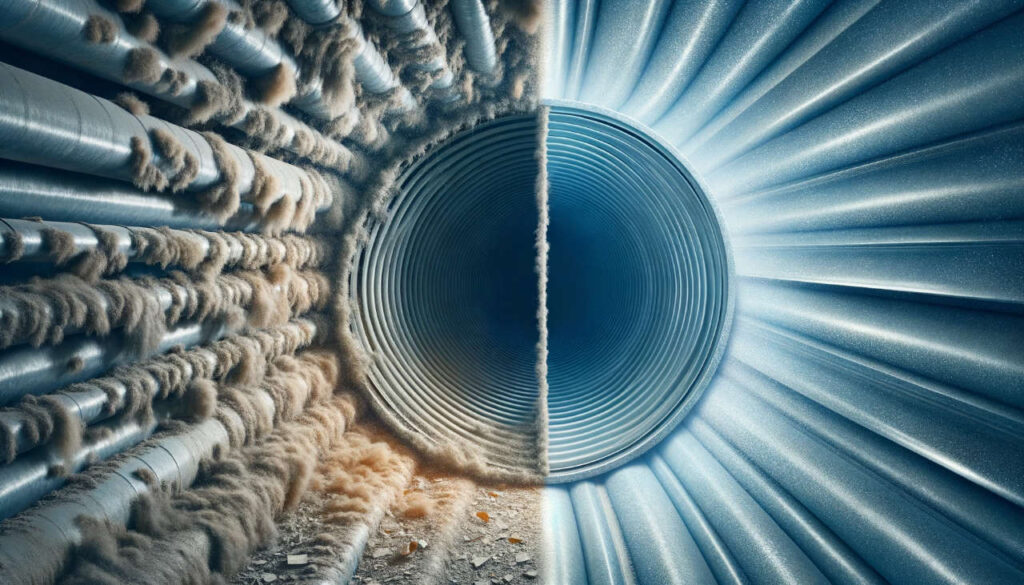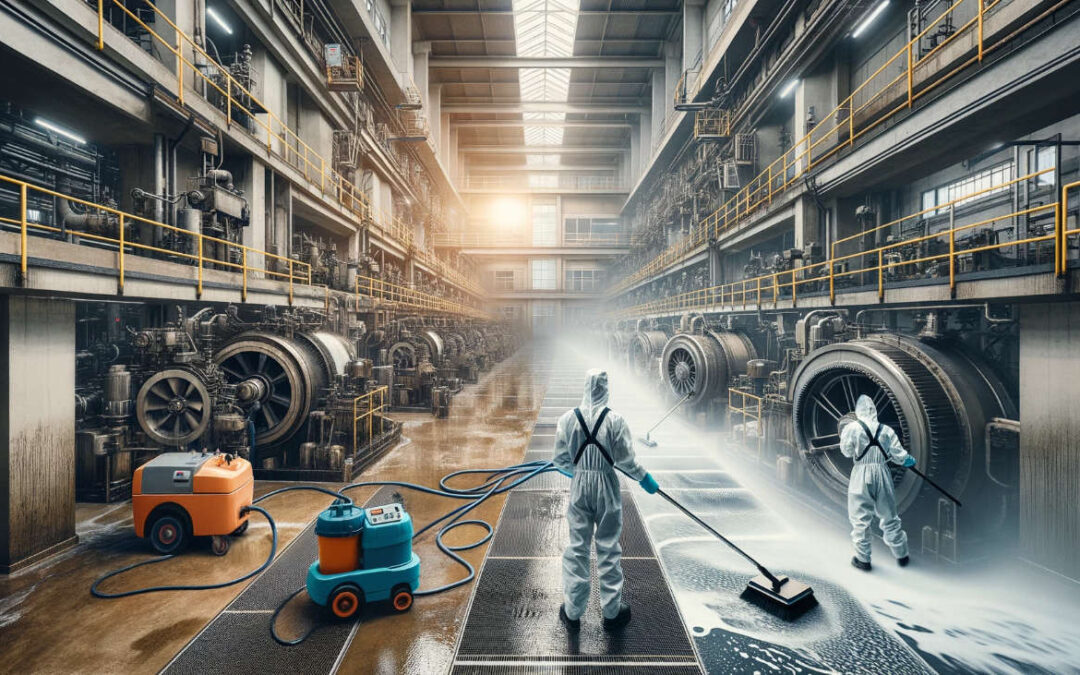Cleaning commercial spaces has been a meaningful chunk of our business for decades. We’ve established long term cleaning services with private schools, offices, shipping facilities, medical facilities, and industrial processing plants.
In today’s post we’d like to highlight some of the aspects that go into our industrial cleaning services. A safe environment is a profitable one, after all.
Here are the sections on cleaning we’ll cover:
- Types of Bacteria These Spaces Often Encounter
- Area-Specific Cleaning Methods
- Ventilation System Facts (Where Cleaning Matters Most)
- Optimizing a cleaning schedule
Types of Bacteria Industrial Spaces Often Encounter (That We Can Help Decontaminate)
Staphylococcus aureus (Staph): Often found on human skin, these bacteria can easily contaminate surfaces in commercial areas like office areas, locker rooms, and cafeterias where employees gather.
Escherichia coli (E. coli): This group of bacteria is commonly associated with the gut of humans and animals, but certain strains can be pathogenic, leading to outbreaks of food poisoning. Facilities involved in food processing or handling must be particularly vigilant about this.
Pseudomonas aeruginosa: Known for its resilience, these bacteria can thrive in a wide range of environments, including water systems and damp areas, posing risks especially in facilities with complex plumbing or that use water in their processes.
Legionella pneumophila: This bacterium is responsible for Legionnaires’ disease and thrives in water systems, cooling towers, and humid environments, making buildings with extensive water-cooling systems potential hotspots.
Listeria monocytogenes: A concern in food processing and storage facilities, this bacterium can grow at refrigeration temperatures, making it a challenging pathogen to control.
Modern, highly trained industrial cleaning teams provide tailored disinfection solutions to address each of the above threats. It’s what forward-thinking companies need to run a trouble free operation that can exceed expectations.
Especially for a new facility — industrial cleaning services are a strong way to ensure growth for the company.

Custom Decontamination Methods for Different Areas of the Facility, From Office Spaces to Machine Areas
A critical area of focus for facility managers is the maintenance and sanitation of machinery and equipment, which are particularly prone to grease and grime build-up. These typically accumulate in commercial areas with high usage of lubricants and fluids, such as engines, conveyors, presses, and assembly lines. In the ways accumulated water damage safety standards, these fluids are even more slippery for common areas in need of cleaning.
Each surface can attract dust and debris, leading to a layer of grime that adheres stubbornly to commercial surfaces.
In environments like food processing plants or manufacturing plants that deal with oil-based products, the challenge is even greater due to the constant exposure to substances that can degrade equipment performance over time in those large areas.
In contrast, cleaning protocols for office spaces lean towards milder, eco-friendly cleaning agents and a focus on dust removal, vacuuming, and disinfection. Special attention is given to ergonomic and sensitive electronic equipment, ensuring that cleaning processes do not interfere with the functionality of office machinery. Longevity and clean, where the cleaning products are suited to the space. Floors, carpets, hard surfaces and other small office features all benefit from the removal of germs, dirt, and fluids.
Dust, allergens, and everyday spills are common concerns, along with the disinfecting of high-touch surfaces like keyboards, desks, and door handles to prevent the spread of germs.
For commercial machinery and areas prone to grease build-up, the focus is on using degreasers and industrial-strength cleaners that can break down oily residues without damaging the equipment. Techniques such as pressure washing, steam cleaning, and the use of absorbent materials are employed to ensure thorough cleaning of the entire facility.

Workplace Ventilation System Facts
Factories and warehouses often deal with particulate matter from manufacturing processes, chemicals, and other industrial byproducts that can severely degrade indoor air quality. The US Environmental Protection Agency (EPA) indicates that indoor air can be up to 70 times more polluted than outdoor air, a situation that can be exacerbated in industrial settings without proper ventilation and air filtration.
Fact: Dust, dirt, and other contaminants can lead to 80% of HVAC equipment breakdowns, which is particularly concerning for industrial outfits where climate control is crucial for both worker comfort and process control for businesses.
Regular air duct cleaning in industrial settings ensures HVAC systems operate efficiently, reducing unnecessary energy consumption and extending the lifespan of expensive business equipment.
This commercial efficiency is crucial for maintaining optimal production levels and preventing costly downtime that affects employees and customers.
As part of a full-scale decontamination effort, the air systems are a must.
Setting & Optimizing A Proper Industrial Decontamination Schedule
Activity and Risk
Imagine stepping into a bustling food processing plant, where customers rely on your consistency. Surfaces that touch the products must be sanitized continuously, ideally after every production cycle, to prevent cross-contamination. It’s a high-stakes game where the frequency of cleaning is dictated by the rhythm of business production and the uncompromising standards of commercial hygiene.
Contrast this with the gritty floors of a metal fabrication workshop, where sparks fly and dust settles like a thin veil over everything. The end of each shift marks the beginning of a cleanup operation, vacuuming the day’s toil away and checking air filters to maintain high breathability.
Here, daily disinfecting and safety cleanups are the drumbeat to which the facility marches, preventing the buildup from becoming a commercial nemesis.
Seasonal Shifts and Special Cleaning Circumstances
Consider the influx of personnel or increased production around the holidays in a distribution center. These peaks necessitate a ramp-up in cleaning diligence, ensuring the environment remains conducive to health and productivity amidst the hustle. Shift leaders can help determine when a deep cleaning crew would ideally begin so that they can minimize disruption for all kinds of commercial outfits.
Or picture a pharmaceutical lab, where the introduction of a new product line might bring with it a slew of additional cleanliness protocols. These special circumstances aren’t just blips on the radar; they’re opportunities to adapt and refine your cleaning regimen, ensuring it’s as dynamic as the facility it supports.

